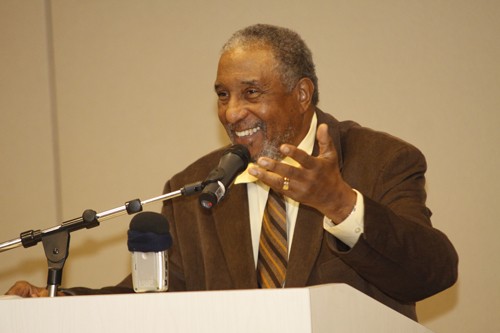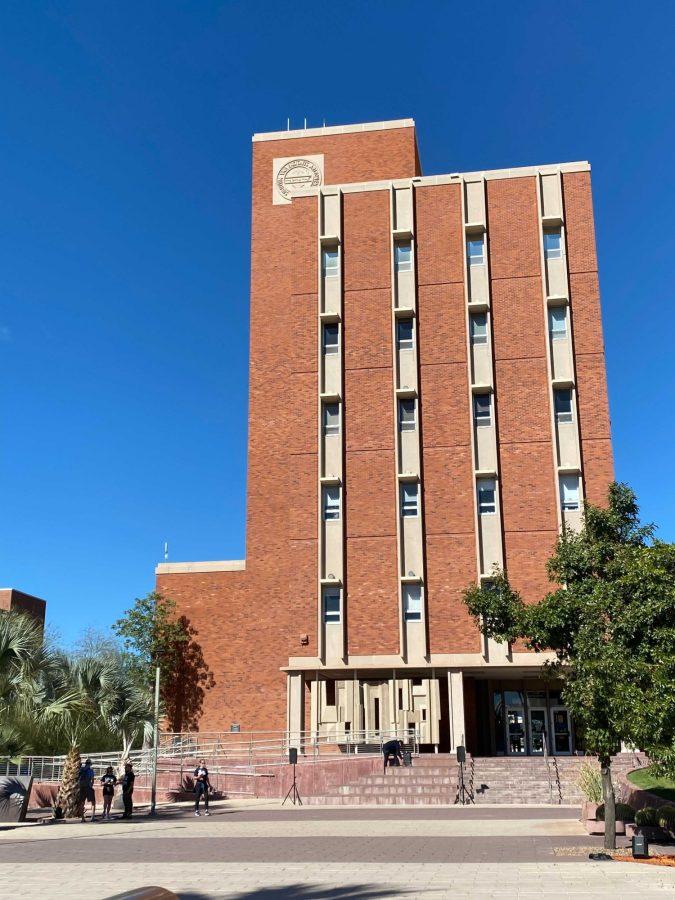One of the groundwork innovators of the American Civil Rights movement spoke on campus last night, to over 100 Tucsonans of all ages about wielding the power of nonviolent resistance to injustice.
Sponsored by the ASUA Women’s Resource Center (WRC), the Culture of Peace Alliance (COPA), and the newly created student-community Nonviolence Legacy Project, Dr. Bernard LaFayette Jr. came to campus for the second time to sponsor a training of “”nonviolent direct action techniques”” based on the models of Dr. Martin Luther King, Jr.
“”My life changed when I met Martin Luther King,”” LaFayette said.
“”He believed in blending ideas,”” LaFayette said of Dr. King. “”He borrowed from everybody. He was able to put together a philosophy for himself – and not just a theoretical construct but a program of how it could apply to today’s problems. He didn’t want to change just a few sentences, or a few paragraphs, but change the whole book,”” he said.
Dr. LaFayette said that he didn’t want to be a leader. Rather, he wanted to assist the leaders. He trained some of the most well-known names of the movement such as Ralph Abernathy and Jesse Jackson in techniques such as how to deal with the media and write press releases, etc.
Recalling going over a press statement with Dr. King shortly before he was assassinated, LaFayette said Dr. King made a remark about what would be a good next step for the movement.
“”The last words (Dr. King) said to me were, ‘Bernard, we got to institutionalize and internationalize nonviolence’,”” – leaving the sentence incomplete.
5 hours later Dr. King was shot, LaFayette recalled.
That unfinished sentence of Dr. King, LaFayette said, moved him to dedicate life’s mission to completing the task. Out of such inspiration was born global peace institutions that educate and train nonviolent activists such as the Center for Nonviolence and Peace Studies at University of Rhode Island.
“”We have 23 centers around the world,”” LaFayette said, including in Africa, Israel/Palestine and the United States.
Dr. LaFayette also recalled the activities of the organization he helped found as a 20 year-old in 1960, the Student Nonviolent Coordinating Committee (SNCC).
Which eminent historian and adult SNCC advisor Howard Zinn, in his 1964 book “”SNCC: The New Abolitionists,”” describes with the passage, “”For the first time in our history a major social movement, shaking the nation to its bones, is being led by youngsters.””
“”Bernard LaFayette was really a pioneer of the Southern movement,”” Zinn said in a telephone interview from his home in Auburndale, MA on Monday. “”He was a courageous person who had a very powerful moral convictions about racial hatred and segregation. And he followed through on his convictions with his body and his actions; he risked arrest and beatings in order to follow his principles.””
Malia Uhatafe, Near Eastern Studies senior and coordinator of the ASUA Women’s Resource Center, a feminist-activist group on campus, said the purpose of WRC’s collaboration with the Culture of Peace Alliance in bringing LaFayette to campus was to utilize the techniques taught by LaFayette and COPA coordinators to build bridges with the campus and Tucson communities, as well as to expose students who aren’t so familiar with community organizations and inspire an alliance of activism.
“”There’s violence everywhere,”” Uhatafe said. “”It’s easy to act with violence. And creating a peaceful attitude or peace action in changing something is a solution that can affect you as an activist but also those who are watching and those who are with you.””
“”We have to approach these movements as a science,”” LaFayette said. “”(And) if you’re gonna bring about change, you gotta understand why the conditions exist. Otherwise they’ll continue over and over again.””
LaFayette spoke about recognizing problems beyond the obvious ways. He gave the example of looking not only at what happened to Rosa Parks (as a woman who refused to give up her seat on a segregated bus in Montgomery, Alabama in 1955), but the people angry with her for “”holding up the bus and causing so much trouble.””
Looking at ourselves in how we participate in the problem, he said, is a crucial part about how we can overcome horrible injustices such as racial discrimination.
“”Once you realize how you can change, it gives you all the faith and confidence on how the situation can change.””









